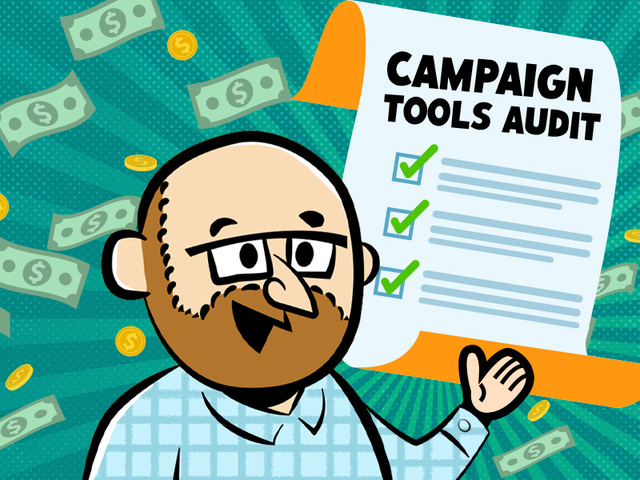
Campaign Tools Audit: A Time- and Cost-Saving Must
Whether you are a nonprofit association or consulting firm, the end of the year is a great time for a tools audit and cleanup. After 15 years in business, we have realized that due to either the consolidation of digital tool functions or silos within the company, we wound up having multiple tools that do similar things. Reviewing your tools on a yearly basis can help with organizational clarity and cost, but your review should not be just about money. Looking at all your subscriptions and making choices about your needs can yield strategic clarity. Having goals, a process, and a collection point helps.
- Define goals: What are the core goals for your tools for the year?
- Know what functions you need: What are the functions you are expanding?
- Know what is less of a priority: What are the functions you are scaling back?
We have seen a ton of growth in campaign tools, and whether they are focused on advocacy communications or web optimization, the campaign tools landscape is continuing to change. Below are important questions and topics to guide your evaluation—and save you a lot of money.
What are recurring charges? Pulling a list of recurring charges is a good place to start your evaluation process. Organize these charges by type and look for duplications and reductions, focusing on what you really need.
Is the tool worth the money? Although this is not strictly a cost-cutting exercise, value is important, and if you find a tool with similar functionality at a much lower cost, it is likely worth changing.
When was the last time someone used the tool? This question is essential in narrowing down which tool needs to go, particularly if you find yourself using multiple tools with similar functions. Your team may love a tool, but if they do not use it, let it go!
Do you need all the seats you are paying for? Chances are, you can reduce the number of users registered for tools to reduce your costs.
Are there costs for storing data? Many apps charge you for data they keep (this is especially the case with email lists). By cutting down the size of your list, you can save yourself a lot of money.
Have you reviewed pricing lately? Pricing on digital apps changes all the time. Going back and looking at the pricing to see what you are getting at the pro vs business levels may save you money. Likewise, paying for a service annually or biannually instead of monthly can lock you in at a considerably lower price with a platform you need regardless.
With so many available tools performing only slightly different functions, you can see clearly how rampant duplication may be on your digital tools. Here are a few places we found duplication during our own tools audit:
Survey tools: There is a lot of duplication in the survey space. Tools like Survey Monkey, Google Forms, and Jot Form are duplicative. Picking one and sticking with it can create savings for your team.
Organizational tools: Monday, Evernote, Asana, and other project management tools are platforms where you may be paying for more seats than you need.
SEO tools: Paid SEO tools are one place in our digital tool portfolio where we have found savings without sacrificing functionality. Google Search Console and PageSpeed Insights are free alternatives to paid platforms.
Web domains: You may have unused or out-of-date web domains you may be able to get rid of. This is another easy place to save.
Video tools: Anybody who has a video recording tool also has a podcasting tool—you likely can save yourself money by using only one tool for both functions. We have enjoyed using Squadcast for both needs.
Make sure you are auditing other tools and recurring charges. Everything from your Zoom hosting capacity, your number of Amazon Prime accounts, and even your insurance costs all add up—and all matter on your budget.
Ask questions and negotiate. Understanding how a product is valued can allow you to find places to save money. Depending on the tool and price point, there may be room to negotiate terms and prices that work for everyone.
Struggling to choose? Start with our roundup of campaign tools categories. Sort by categories with the most tools, then look at tools that your team likes to use. You want to keep tools people love, and good tools are usually self-evident. We found a lot of agreement and few conflicting opinions between staff during our own evaluation. Then decide on what gets cut. Delays cost time, focus, and money.
Plan your audit around your billing schedule. Most of our subscriptions renew in the spring and some in the fall. Regardless of when you hold this evaluation, make sure you get your whole team involved—have fun and make a game of it.
Have questions or want to learn more about performing a tools audit? Click below to get in touch or check out the rest of our blog for related content.